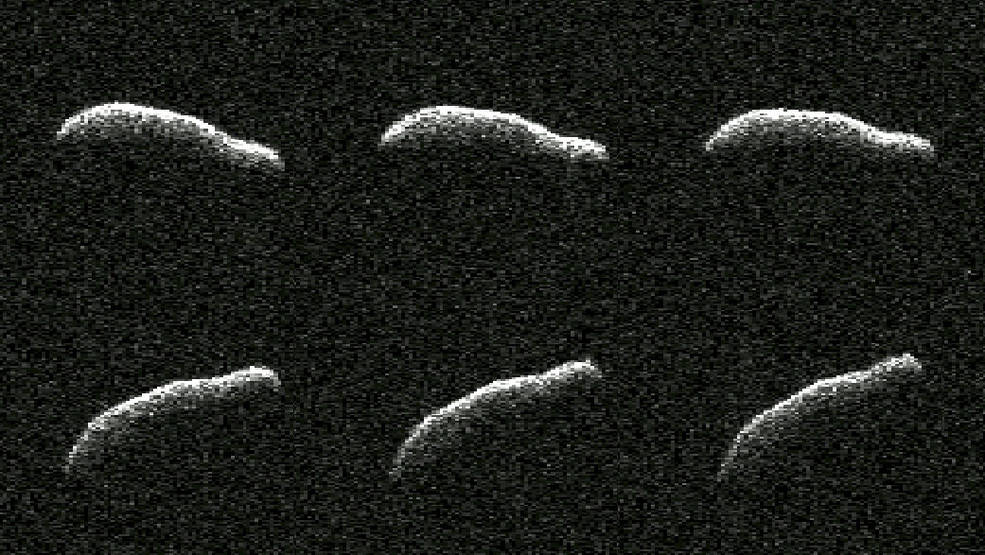One of the most elongated asteroids ever imaged by planetary radar was closely tracked by the agency’s Deep Space Network.
On Feb. 3, an asteroid more than three times as long as it is wide safely flew past Earth at a distance of about 1.1 million miles (1.8 million kilometers, or a little under five times the distance between the Moon and Earth). While there was no risk of the asteroid – called 2011 AG5 – impacting our planet, scientists at NASA’s Jet Propulsion Laboratory in Southern California closely tracked the object, making invaluable observations to help determine its size, rotation, surface details, and, most notably, shape.
This close approach provided the first opportunity to take a detailed look at the asteroid since it was discovered in 2011, revealing an object about 1,600 feet (500 meters) long and about 500 feet (150 meters) wide – dimensions comparable to the Empire State Building. The powerful 230-foot (70-meter) Goldstone Solar System Radar antenna dish at the Deep Space Network’s facility near Barstow, California, revealed the dimensions of this extremely elongated asteroid.
“Of the 1,040 near-Earth objects observed by planetary radar to date, this is one of the most elongated we’ve seen,” said Lance Benner, principal scientist at JPL who helped lead the observations.
The Goldstone radar observations took place from Jan. 29 to Feb. 4, capturing several other details: Along with a large, broad concavity in one of the asteroid’s two hemispheres, 2011 AG5 has subtle dark and lighter regions that may indicate small-scale surface features a few dozen meters across. And if the asteroid were viewed by the human eye, it would appear as dark as charcoal. The observations also confirmed 2011 AG5 has a slow rotation rate, taking nine hours to fully rotate.
Fully interactive, Eyes on Asteroids uses science data to help visualize asteroid and comet orbits around the Sun. Zoom in to travel along with your favorite spacecraft as they explore these fascinating near-Earth objects in beautiful 3D. Credit: NASA/JPL-Caltech
Beyond contributing to a better understanding of what this object looks like up close, the Goldstone radar observations provide a key measurement of the asteroid’s orbit around the Sun. Radar provides precise distance measurements that can help scientists at NASA’s Center for Near Earth Object Studies (CNEOS) refine the asteroid’s orbital path. Asteroid 2011 AG5 orbits the Sun once every 621 days and won’t have a very close encounter with Earth until 2040, when it will safely pass our planet at a distance of about 670,000 miles (1.1 million kilometers, or nearly three times the Earth-Moon distance).
“Interestingly, shortly after its discovery, 2011 AG5 became a poster-child asteroid when our analysis showed it had a small chance of a future impact,” said Paul Chodas, the director for CNEOS at JPL. “Continued observations of this object ruled out any chance of impact, and these new ranging measurements by the planetary radar team will further refine exactly where it will be far into the future.”
CNEOS calculates every known near-Earth asteroid orbit to provide assessments of potential impact hazards. Both the Goldstone Solar System Radar Group and CNEOS are supported by NASA’s Near-Earth Object Observations Program within the Planetary Defense Coordination Office at the agency’s headquarters in Washington. The Deep Space Network receives programmatic oversight from Space Communications and Navigation program office within the Space Operations Mission Directorate, also at the agency’s headquarters.
More information about planetary radar, CNEOS, and near-Earth objects can be found at:



























